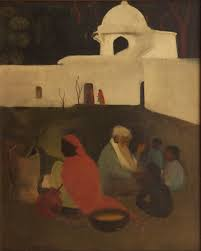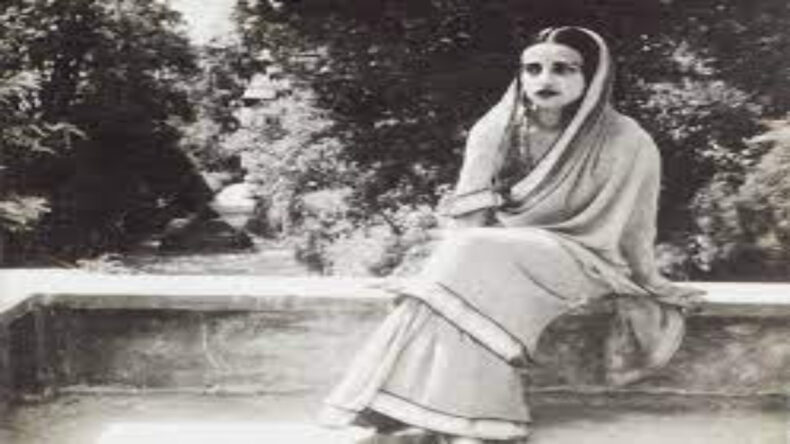Introduction
In a groundbreaking achievement, Amrita Sher-Gil, a renowned artist known for her exceptional ability to blend European and Indian influences, has reached a significant milestone in Indian art.
In an auction held on September 16, 2024, an extraordinary piece of art made history by fetching an astounding price. The renowned canvas titled “The Story Teller,” created in 1937 has now become the highest-priced artwork ever sold by an Indian artist.
The remarkable sale reached an astonishing Rs 61.8 crore ($7.44 million), leaving art enthusiasts and collectors in awe. This iconic masterpiece has undoubtedly etched its name in the annals of art history, solidifying its status as a record-breaking achievement.
The sale of Sher-Gil’s artwork not only pays tribute to her exceptional artistic talent but also reshapes the perception of Indian art on an international level.
Amrita Sher-Gil: Breaking the Previous Record
A new record has been set in Indian artwork auctions. Before this extraordinary sale, the prestigious title of the most expensive Indian artwork sold at an auction was held by S. H. Raza’s masterpiece titled “Gestation,” which had fetched an impressive ₹51.75 crore.
In a remarkable achievement, Amrita Sher-Gil’s masterpiece has surpassed the previous record, solidifying her position as a revered artistic figure whose creations continue to mesmerize art enthusiasts across the globe.
Significance of ‘The Story Teller’ by Amrita Sher-Gil:
Amrita Sher-Gil’s “The Story Teller” is significant in the artist’s remarkable oeuvre. It was created “during an important formative period in the artist’s oeuvre that saw her European and Indian influences merge into a unique artistic language.”

This painting represents a departure from her conventional style, as it was executed “en plein air,” a technique relatively uncommon in her body of work. What makes this painting truly exceptional is its portrayal of women, a recurring theme in her art as a close-knit group, exuding an inherent intimacy within the canvas.
Amrita Sher-Gil’s Unique Artistic Style:
“The Story Teller,” encapsulates Sher-Gil’s most sincere and expressive compositions. This sincerity is further evidenced by her personal fondness for the painting, as reflected in her letters. It is a testament to her ability to weave emotions and stories into her art, creating a profound connection between the viewer and the canvas.
In “The Story Teller,” Sher-Gil’s mastery of color, form, and emotion converge to create a masterpiece that resonates with art enthusiasts and collectors alike.
Amrita Sher-Gil: Influences from Pahari Paintings
Art connoisseur Karl Khandalavala suggested that “The Story Teller” drew inspiration from Pahari paintings, a traditional Indian art form known for its lyricism and vivid colors. Although the technique employed in this painting differs from that of Basohli miniatures, it is pregnant with the same sense of vibrant storytelling and emotional depth.
Incorporating elements like cows, women, and the setting adds layers of symbolism and cultural richness to the artwork, connecting it to India’s rich artistic heritage.
Amrita Sher-Gil’s Remarkable Journey
Amrita Sher-Gil’s life and artistic journey are as captivating as her creations. Born in Budapest in 1913 to an Indian Sikh aristocrat father and a Hungarian-Jewish opera singer mother, she was destined to be a trailblazer. At eight, she relocated to Shimla, India, where her artistic talent flourished. Encouraged by her uncle Ervin Baktay, an art historian, she honed her unique artistic vocabulary and pursued formal training, leaving an indelible mark on art.

During her student days at the Ecole des Beaux-Arts in Paris in the early ’30s, Sher-Gil was greatly influenced by post-impressionism and the bohemian culture of the era. Her experiences in Europe enriched her artistic palette, allowing her to meld her Western influences with the traditional Indian art forms that she encountered during her extensive travels across the country.
Sher-Gil’s work includes numerous self-portraits and nude studies, reflecting her introspective and bold nature. Her art was a harmonious blend of her Western training and deep-rooted connection to India’s artistic heritage, encompassing influences from Indian miniatures, Ajanta paintings, and the diverse landscapes she explored during her travels.
Amrita Sher-Gil: Legacy and Impact
Despite her untimely death at 28 in 1941, Amrita Sher-Gil’s legacy endures. She has been declared a “national treasure” by the Indian government, a status that prohibits her works in India from being exported to other countries. This recognition speaks to the enduring importance of her art in the Indian cultural and artistic landscape.
The historic sale of “The Story Teller” not only underscores the immense value of Amrita Sher-Gil’s artistic legacy but also celebrates the enduring power of Indian art on the global stage. Her ability to bridge cultures, her unwavering dedication to her craft, and her profound storytelling through art continues to inspire artists and art enthusiasts around the world.
Conclusion
Amrita Sher-Gil’s “The Story Teller” has transcended artistic and geographical boundaries to become a symbol of the rich tapestry of Indian art. Its record-breaking sale serves as a testament to the enduring legacy of this visionary artist, whose work continues to captivate and inspire generations of art lovers.
As we celebrate this historic achievement, we also celebrate the remarkable journey of Amrita Sher-Gil, an artist who dared to merge worlds and create art that speaks to the soul.













